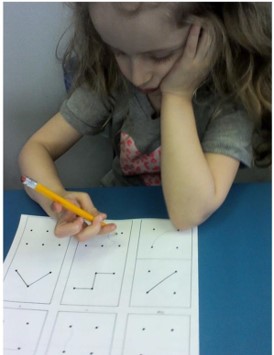
Fine motor skills combine the use of eyes and hands working together. They also serve to integrate sub-skills such as control of body posture and eye muscles, along with muscles of the hands and fingers working together.
These skills are essential for self-care activities, such as dressing and success in school for activities such as reading and handwriting. They are also essential for independence in activities that require use of both hands working together.
Three key details about fine motor skills:
- Fine motor skills rely upon the use of vision to guide motor skills. This detail is commonly referred to as visual-motor and is used in sports as well as schoolwork. For example, the use of skilled fine motor control is shown by movements of the eyes as they guide the actions of both baseball players in this next photo.
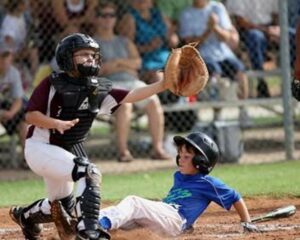
While the catcher is looking upward to the incoming ball and reaching out to position his arm to grab it, the runner has his eyes turned downward to guide his foot onto home plate.
Many details of schoolwork also depend upon fine motor skills for success. For example, in the photo below the child is using his eyes to read the numbers on the ruler. He is also using his eyes to guide the pencil along the edge of the ruler. His plan is to make the 5” strips needed to build the straw airplane shown on the tablet.
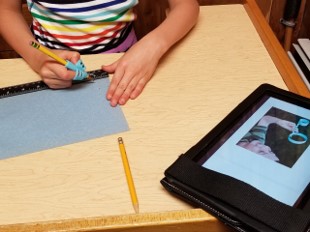
- Fine motor skills also rely upon the ability to use both sides of the body moving together. This key detail is commonly referred to as bilateral motor control and it is another key feature. For example, the youngster in the photo with the ruler is using both hands to accomplish his task. One hand is holding the piece of paper still. The other hand is controlling the pencil in such a way as to draw a line along the top of the ruler. The ability to control muscle movement with precision on both sides of the body is a key feature of fine motor skills.
The photos below show two youngsters involved this detail of fine motor skills. They are learning to control muscles that involve separate moves of each hand.
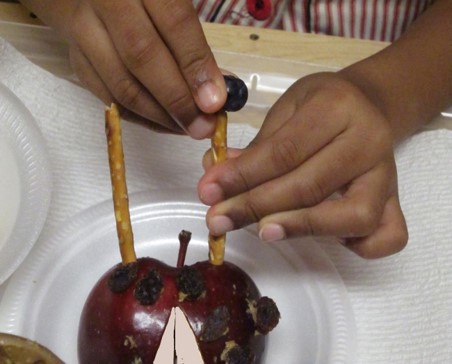
When both hands work together, one hand will typically hold an object still. The other hand then pushes/pulls/twists a related object into position. As this girl works on a “ladybug” food craft, she is holding a pretzel stick “antenna” still with one hand. Meanwhile the other hand pushes and twists a blueberry onto the top of the stick.
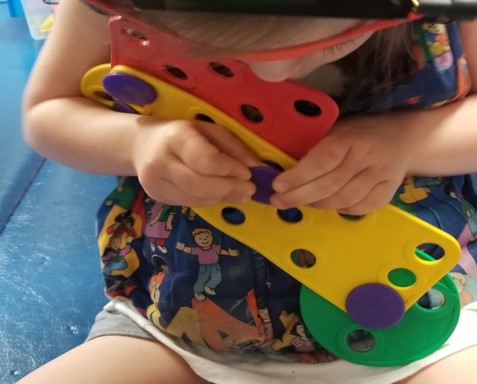
This youngster is also learning to use both hands working together while building a toy with Busy Buttons. As she holds one part of the toy still with one hand, the other hand is busy pushing and twisting the button into place.
- The last key detail of fine motor skills to be mentioned here includes the ability to use the small muscles of either hand with precision. This key detail is commonly referred to as “hand turning” or sometimes as “in-hand manipulation”. This detail refers to the ability to use the fingertips with precision to guide a tool into place.
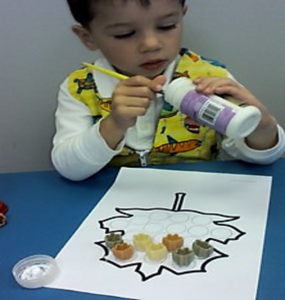
Look at how this youngster is positioning his fingertips and manipulating the brush to scrape glue out of the bottle for this craft. This type of precision is required for independence when using utensils at mealtime. In hand manipulation features of fine motor skills are needed whenever tools are used.
The ability to use fingertips for tool use is an essential feature of daily living skills. This feature allow for independence in activities such as brushing teeth, grooming, manipulating clothing fasteners and digital devices. In school this skill allows for knowhow in managing math tools, science projects, musical instruments and art materials.
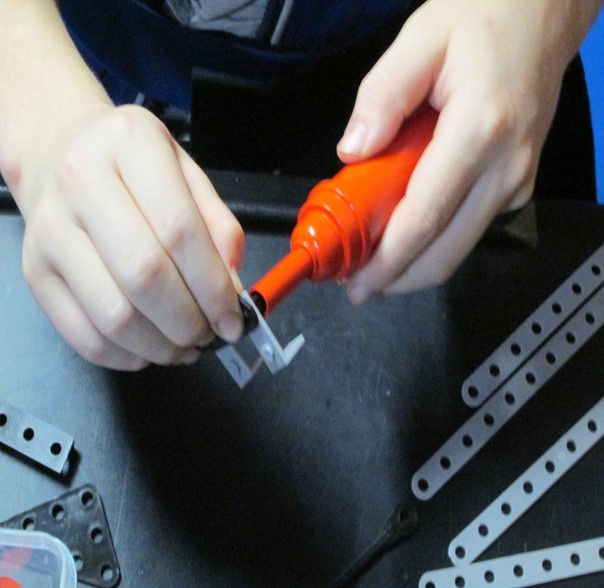
For example, this youngster is showing good fingertip control and mastery of a riveting tool used to build a project.
Fine motor skills are essential to living life as a successful and independent person. The ability to coordinate movements of the eyes with movements of the body parts are essential to sports. Coordinating movements of the eyes with movements of the hands is an essential feature of these skills in school. The ability to use both sides of the body together is an essential feature of most daily living skills that make us uniquely human.
For additional information, please refer to this post on bilateral motor integration and this post on postural control and fine motor skills. You may also wish to read the article “Best Ways to Improve Fine Motor Skills”.

Comments are closed.